Abstract
Double inoculation (15 h apart) of the soybean cultivar Williams with Bradyrhizobium japonicum I-110ARS reveals a rapid regulatory plant response that inhibits nodulation of distal portions of the primary root (M Pierce, WD Bauer 1984 Plant Physiol 73: 286-290). Only living, homologous rhizobia elicit the response. We conducted similar double inoculation experiments to test the hypothesis that this is a universal phenomenon in soybean symbioses. We investigated interactions of the cultivar McCall with the slow-growing strain Bradyrhizobium sp. 3185 (=3G4b16) and strains of the fast-growing soybean symbiont, Rhizobium fredii (USDA191 [Nod+ on McCall] and USDA257 [Nod− on McCall]). Nodulation was not detectably inhibited when USDA257 was included in various combinations with an inoculum of USDA191. Strain USDA257 cohabited nodules with strain USDA191 when plants were inoculated sequentially with both strains, but USDA257 did not nodulate McCall when a sterile culture filtrate of USDA191 was added to USDA257 inoculum. There was only a slight inhibition of nodulation of distal portions of the primary root in double inoculation experiments with McCall and strain 3185. Because these results were unexpected, we repeated the experiments with Williams and strain I-110ARS. The response was similar to that observed in the McCall × 3185 interaction. Regulation of nodulation on the primary root thus appears to be variable and depend on strain X cultivar interactions.
Full text
PDF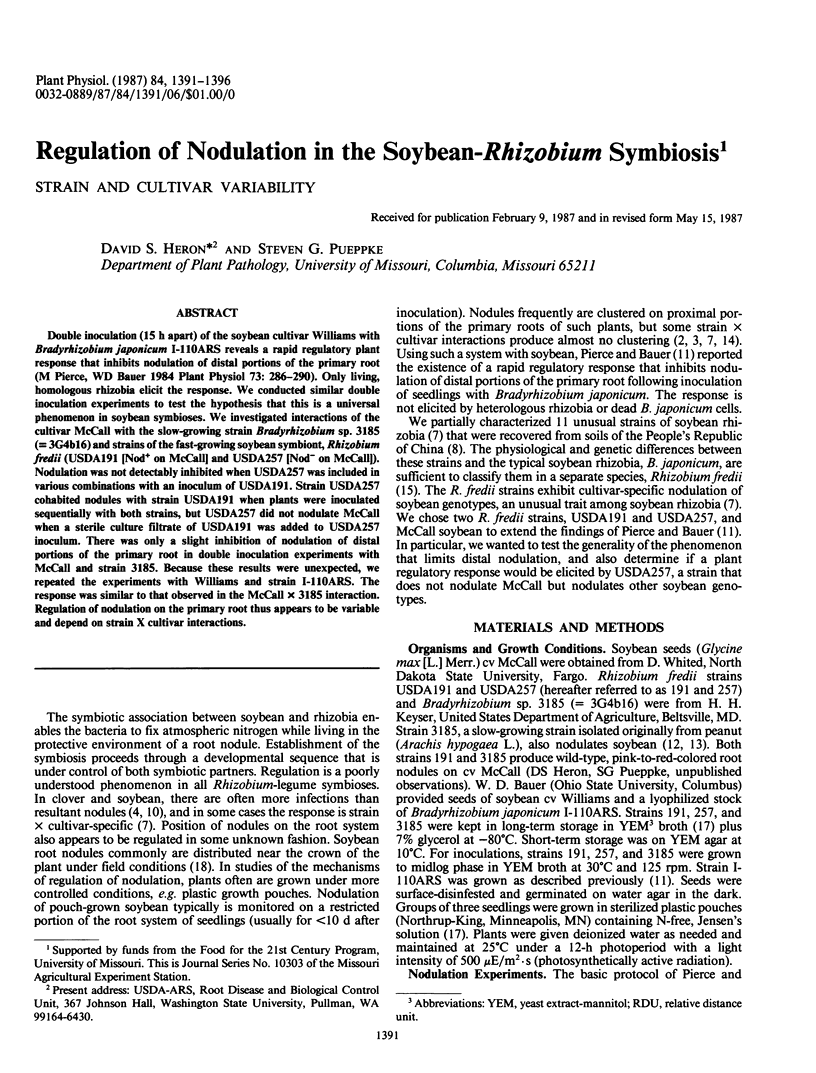
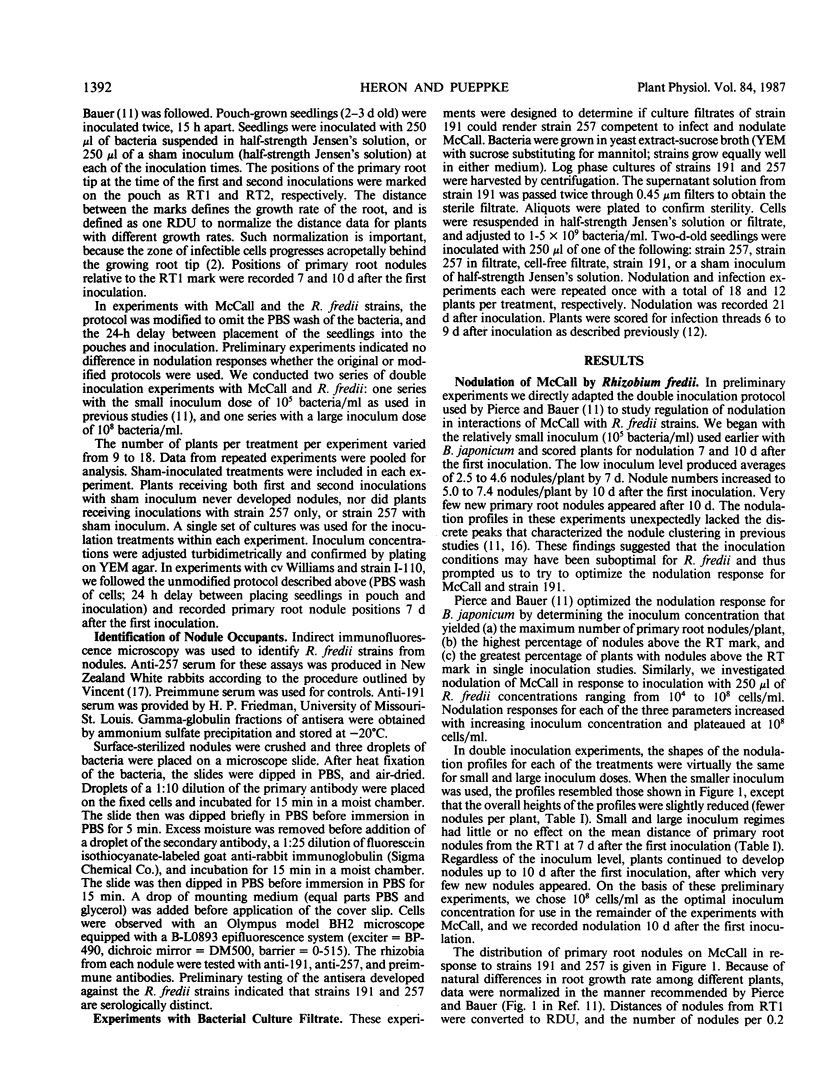
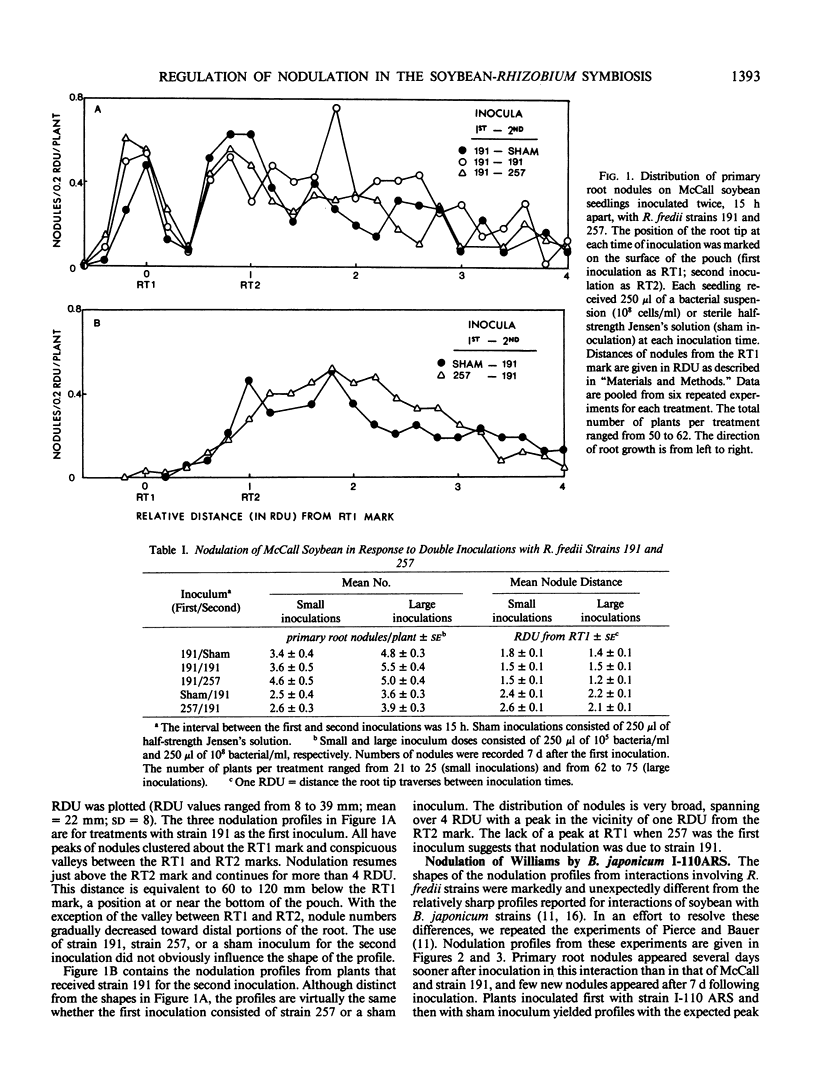
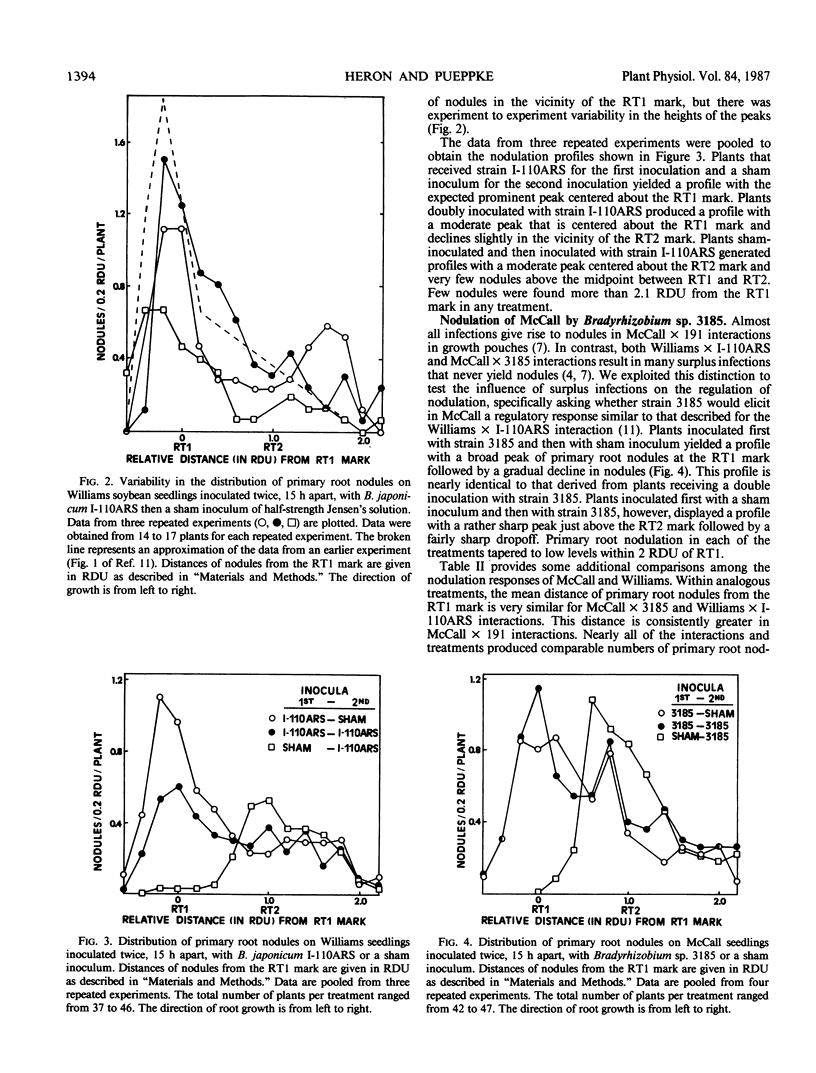
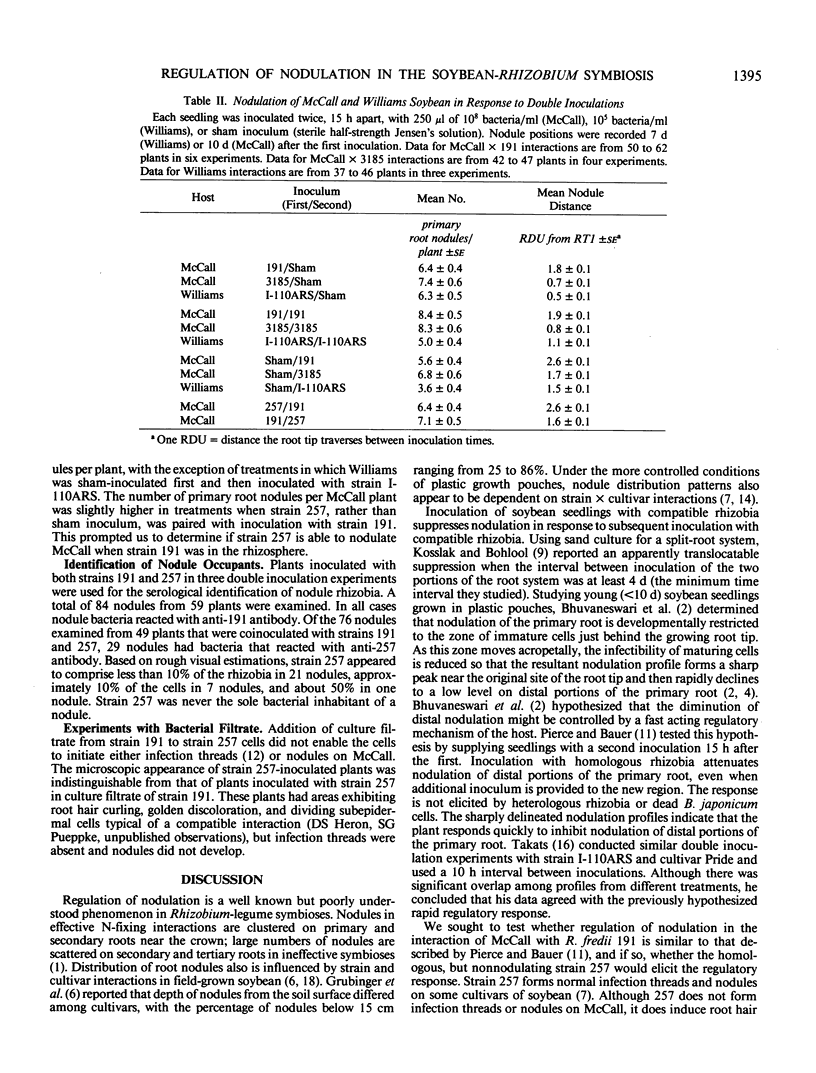
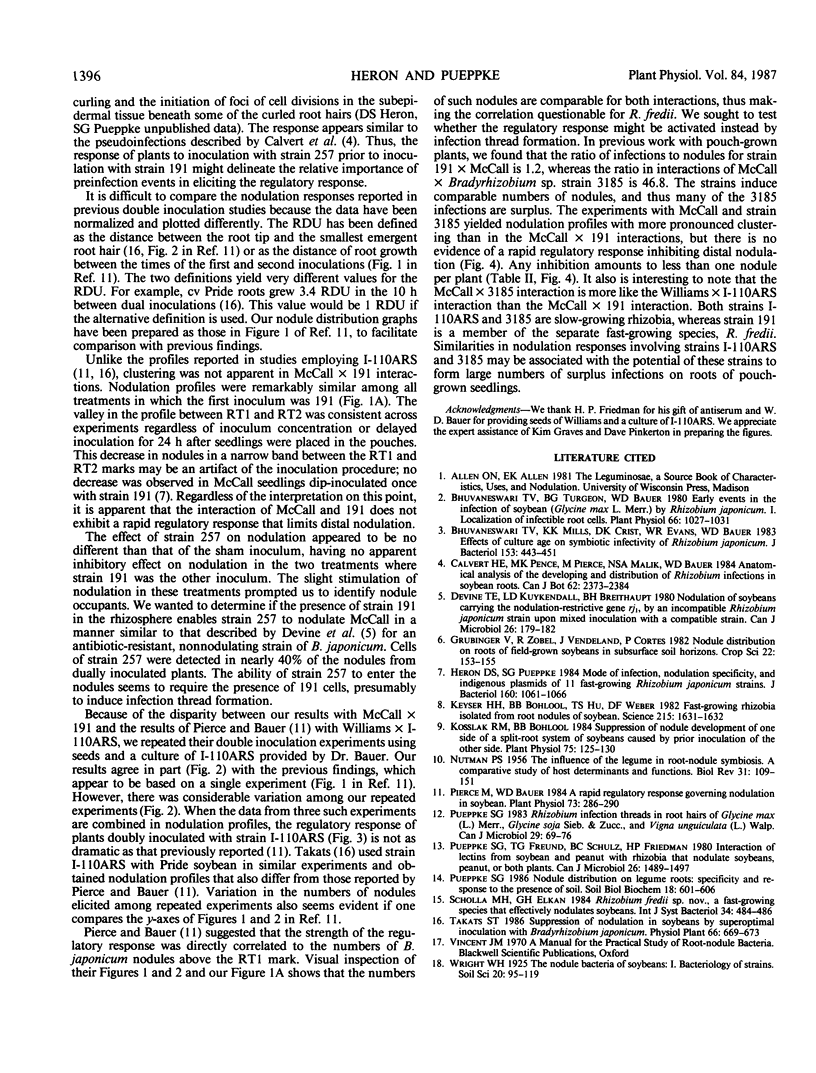
Selected References
These references are in PubMed. This may not be the complete list of references from this article.
- Bhuvaneswari T. V., Mills K. K., Crist D. K., Evans W. R., Bauer W. D. Effects of culture age on symbiotic infectivity of Rhizobium japonicum. J Bacteriol. 1983 Jan;153(1):443–451. doi: 10.1128/jb.153.1.443-451.1983. [DOI] [PMC free article] [PubMed] [Google Scholar]
- Bhuvaneswari T. V., Turgeon B. G., Bauer W. D. Early Events in the Infection of Soybean (Glycine max L. Merr) by Rhizobium japonicum: I. LOCALIZATION OF INFECTIBLE ROOT CELLS. Plant Physiol. 1980 Dec;66(6):1027–1031. doi: 10.1104/pp.66.6.1027. [DOI] [PMC free article] [PubMed] [Google Scholar]
- Devine T. E., Kuykendall L. D., Breithaupt B. H. Nodulation of soybeans carrying the nodulation-restrictive gene, rj1, by an incompatible Rhizobium japonicum strain upon mixed inoculation with a compatible strain. Can J Microbiol. 1980 Feb;26(2):179–182. doi: 10.1139/m80-027. [DOI] [PubMed] [Google Scholar]
- Heron D. S., Pueppke S. G. Mode of infection, nodulation specificity, and indigenous plasmids of 11 fast-growing Rhizobium japonicum strains. J Bacteriol. 1984 Dec;160(3):1061–1066. doi: 10.1128/jb.160.3.1061-1066.1984. [DOI] [PMC free article] [PubMed] [Google Scholar]
- Keyser H. H., Bohlool B. B., Hu T. S., Weber D. F. Fast-growing rhizobia isolated from root nodules of soybean. Science. 1982 Mar 26;215(4540):1631–1632. doi: 10.1126/science.215.4540.1631. [DOI] [PubMed] [Google Scholar]
- Kosslak R. M., Bohlool B. B. Suppression of nodule development of one side of a split-root system of soybeans caused by prior inoculation of the other side. Plant Physiol. 1984 May;75(1):125–130. doi: 10.1104/pp.75.1.125. [DOI] [PMC free article] [PubMed] [Google Scholar]
- Pierce M., Bauer W. D. A rapid regulatory response governing nodulation in soybean. Plant Physiol. 1983 Oct;73(2):286–290. doi: 10.1104/pp.73.2.286. [DOI] [PMC free article] [PubMed] [Google Scholar]
- Pueppke S. G., Freund T. G., Schulz B. C., Friedman H. P. Interaction of lectins from soybean and peanut with rhizobia that nodulate soybean, peanut, or both plants. Can J Microbiol. 1980 Dec;26(12):1489–1497. doi: 10.1139/m80-246. [DOI] [PubMed] [Google Scholar]


